
British Institute for the Study of Iraq
The British Institute for the Study of Iraq (BISI) funds and carries out research and public education on Iraq. They were founded in 1932, as the British School of Archaeology in Iraq, in memory of the renowned archaeologist and explorer Gertrude Bell. BISI’s academic coverage includes the anthropology, archaeology, history, geography and languages of Iraq and other fields in the arts, humanities and social sciences, from the earliest times until the present.
Ur 1922-2022
Papers marking the centenary of Sir Leonard Woolley's first season of excavations at Ur
Format: Paperback
Pages: 307
ISBN: 9780903472432
Pub Date: 30 Jun 2024
Description:
An online colloquium was held in late 2022 to celebrate the centenary of Sir Leonard Woolley’s first season of excavations at AlMuqayyar, the Babylonian city of Ur. This book publishes 18 papers from the colloquium by international scholars, together with a foreword from Dr Laith Majid Hussain, as President of the State Board for Antiquities and Heritage, and a recently unearthed report of J.G.
Taylor’s work at the site, written in 1858. The papers reevaluate Woolley’s work, revisit his archives with fresh eyes and apply 21stcentury techniques to enrich our knowledge of the 7,000 year old city. They also include results from renewed work at Ur, undertaken by joint Iraqi and international teams of archaeologists. The papers highlight the value of welldocumented old excavations and the exciting potential of collaborations to explore new research questions, under the leadership of the Iraqi State Board for Antiquities and Heritage.

Format: Paperback
Pages: 338
ISBN: 9780903472425
Pub Date: 31 May 2024
Description:
This book collects articles written by Farouk Al-Rawi and collaborators and published in the journal IRAQ between 1985 and 2006. The articles present first editions of a variety of cuneiform texts: mythological narrative poems, royal inscriptions, astrological omens and wisdom literature. They represent some of Farouk’s major achievements: his work on the Old Babylonian tablets excavated at Tell Haddad (ancient Meturan) in the 1970s, his decipherment of tablets excavated in the 1980s at Sippar, and his continuation of this vital work in the last three decades through the study and publication of many important cuneiform tablets in Manchester, London and Suleimaniyah.
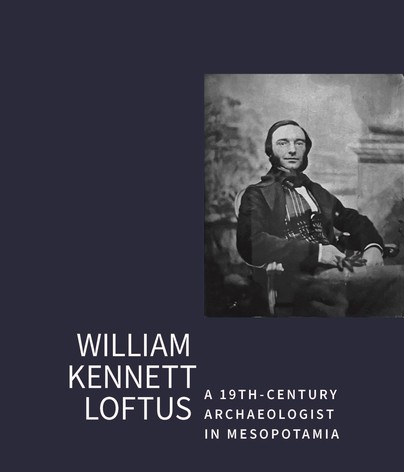
Format: Paperback
Pages: 252
ISBN: 9780903472418
Pub Date: 31 Dec 2023
Description:
This book gathers together hitherto unpublished letters from William Kennett Loftus (1820-1858) to friends and relatives in Newcastle-upon-Tyne. The letters have been transcribed and are introduced by John Curtis. Loftus was a geologist attached to the Turco-Persian Frontier Commission which in the years 1849-52 was charged with establishing the border between Persia and the Ottoman Empire.
In this position he was able to undertake pioneering archaeological work at sites such as Warka in Mesopotamia (Iraq) and Susa in Persia (Iran). As well as providing information about Loftus’ archaeological work, there are vivid descriptions of celebrating the birthday of Queen Victoria in Baghdad, contending with wild tribesmen, travelling on horseback through the Taurus Mountains in winter, working in temperatures of up to nearly 50° centigrade in the summer, and hunting hyenas and wild pigs. The book also contains genealogical information about Loftus and his family.
Two Early Dynastic houses: living with the dead (Abu Salabikh Excavations, Volume 5 - part 1 and 2)
Format: Paperback
Pages: 572
ISBN: 9780903472388
Pub Date: 31 Jan 2023
Description:
This fifth volume of Abu Salabikh Excavations is the definitive account of the excavation of two large domestic residences at the Early Dynastic III city at Abu Salabikh, in south Iraq 15 km to the north of Nippur. It describes and illustrates the houses and their contents, in particular the intramural burials, with coverage of the human osteology, and botanical, zoological and micromorphological studies.
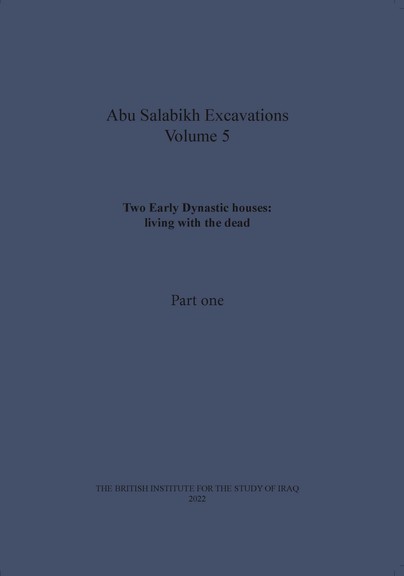
Format: Paperback
Pages: 372
ISBN: 9780903472395
Pub Date: 31 Jan 2023
Description:
This fifth volume of Abu Salabikh Excavations is the definitive account of the excavation of two large domestic residences at the Early Dynastic III city at Abu Salabikh, in south Iraq 15 km to the north of Nippur. It describes and illustrates the houses and their contents, in particular the intramural burials, with coverage of the human osteology, and botanical, zoological and micromorphological studies.

Format: Paperback
Pages: 200
ISBN: 9780903472401
Pub Date: 31 Jan 2023
Description:
This fifth volume of Abu Salabikh Excavations is the definitive account of the excavation of two large domestic residences at the Early Dynastic III city at Abu Salabikh, in south Iraq 15 km to the north of Nippur. It describes and illustrates the houses and their contents, in particular the intramural burials, with coverage of the human osteology, and botanical, zoological and micromorphological studies.
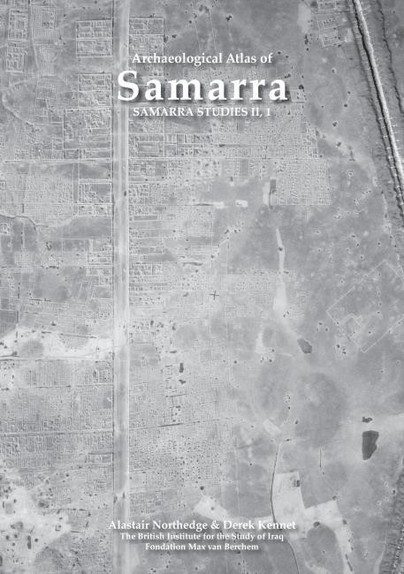
Format: Hardback
Pages: 831
ISBN: 9780903472302
Pub Date: 12 May 2015
Series: Samarra Studies
Description:
The Archaeological Atlas of Samarra sets out to map and catalogue the site and buildings of the Abbasid capital at Samarra in the period 836 to 892 AD, preserved as they were until the middle years of the 20th century. Site maps and catalogues are provided of all the approximately 5819 building and site units identified. This is the first time that it has been possible to catalogue nearly all the buildings of one of the world’s largest ancient cities, from the caliph palaces to the smallest hovels.
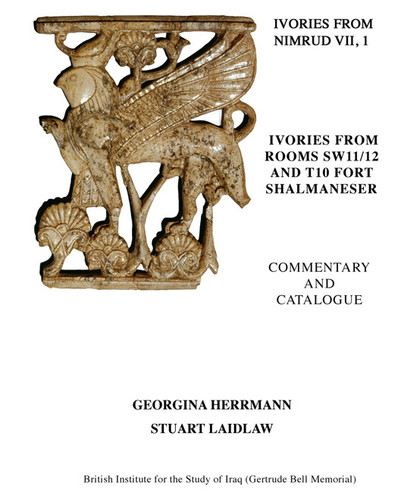
Format: Hardback
Pages: 676
ISBN: 9780903472296
Pub Date: 31 May 2013
Description:
The Lost Art of the Phoenicians Fifty years have passed since the British School of Archaeology in Iraq raised the last ivory from the soil of Fort Shalmaneser. Literally thousands were found, many of which have already been published inIvories from Nimrud I-V, while VI recorded the outstanding pieces from the North West Palace. Ivories from Nimrud VII, Ivories from Rooms SW11/12 and T10 completes the publication of the assemblages in the Fort, as far as records permit.
The ivories of Room SW11/12 are similar in character to those of Room SW37 and probably represent another consignment of booty, while those of T10 in the Throne Room block include pieces from all four traditions, as well as some entirely new ones.With the primary publication completed, it is now possible to look at these remarkable ivories as a whole rather than studying them by prov¬enance, as is discussed in detail in the Commentary. Not surprisingly, it immediately becomes apparent that the majority can be assigned to the Phoenician tradition. There are at least twice as many Phoenician ivo¬ries than the other Levantine and Assyrian ivories. They form therefore an incredible archive, recording the lost art of the Phoenicians, long famed as master craftsmen.The Phoenician ivories can be divided into two; the finest, the Clas¬sic Phoenician, often embellished with delicate, jewel-like inlays, and the other examples still clearly Phoenician in style and subject. While the Classic pieces were probably carved in a single centre, possibly Tyre or Sidon, the others would have been carved in a variety of dif¬ferent Phoenician centres, located along the Mediterranean seaboard.Designs on Syrian-Intermediate ivories are versions of some Phoe¬nician subjects, employing different proportions and styles. They may represent the art of the recently-arrived Aramaean kingdoms, copying their sophisticated neighbours, while North Syrian ivories are entirely different in subject and character and derive from earlier Hittite traditions.The ivories found at Nimrud present a unique resource for studying the minor arts of the Levantine world.

Format: Hardback
Pages: 472
ISBN: 9780903472289
Pub Date: 25 Jun 2010
Description:
This volume is intended as a tribute to the memory of the Sumerologist Jeremy Black, who died in 2004. The Sumerian phrase zà-mí-zu dug-ga-àm 'Your praise is sweet' is commonly addressed to a deity at the close of a work of Sumerian literature. The scope of the thirty contributions, from Sumerology to the nineteenth-century rediscovery of Mesopotamia, is testament to Jeremy's own wide-ranging interests and to his ability to forge scholarly connections and friendships among all who shared his interest in ancient Iraq.

Format: Paperback
Pages: 428
ISBN: 9780903472272
Pub Date: 05 Feb 2010
Description:
This volume presents the research of the British team within the modern excavations at the northern Mesopotamian site of Chagar Bazar, resumed in 1999 after a 62-year hiatus since the excavations of Max Mallowan. It incorporates settlement archaeology approaches and theoretical ideas of "place" in exploring the site and its internal and external landscapes. The primary focus is the settlement during the early 2nd millennium BC (Old Babylonian Period, post-Samsi-Addu), its final ancient occupation.
The authors have taken a contextual approach, integrating aspects of the settlement's internal variations, including both community and private architecture, together with burial practices and symbolic and functional material culture. While its political importance varied, Chagar Bazar's persistence of occupation meant that it played a key role within the regional landscape as a meaningful landmark.

Format: Hardback
Pages: 444
ISBN: 9780903472265
Pub Date: 25 Aug 2009
Description:
The great, ninth century palace which Ashurnasirpal II (883-859) built at his new capital of Kalhu/Nimrud has been excavated over 150 years by various expeditions. Each has been rewarded with remarkable antiquities, including the finest ivories found in the ancient Near East, many of which had been brought to Kalhu by the Assyrian kings. The first ivories were discovered by Austen Henry Layard, followed a century later by Max Mallowan, who found superb ivories in Well NN.
Neither Layard nor Mallowan was able to empty Well AJ: this was achieved by the Iraqi Department of Antiquities and Heritage, who retrieved arguably the finest pieces found at Nimrud. Finally, an interesting collection of ivory and bone tubes was found by Muzahim Mahmud, the discoverer of the famous Royal Tombs, in Well 4. This volume publishes for the first time the majority of the ivories found in the Palace by location. These include superb examples carved in Assyria proper and across the Levant from North Syria to Phoenicia and provide an outstanding illustration of the minor arts of the early first millennium. In addition ivories found in the Central Palace of Tiglath-pileser III and fragmentary pieces found in the domestic contexts of the Town Wall Houses are also included. In addition to a detailed catalogue, this book also aims to assess the present state of ivory studies, discussing the political situation in the Levant, the excavation of the palace, the history of study, the various style-groups of ivories and their possible time and place of production. This volume is the sixth in the Ivories from Nimrud series published by the British School of Archaeology in Iraq now known as the British Institute for the Study of Iraq.

Format: Hardback
Pages: 176
ISBN: 9780903472197
Pub Date: 01 Feb 2006
Illustrations: b/w illus, 16 b/w plates
Description:
This is a facsimile reprint of the trail-blazing book by David Oates, originally published by the British Academy in 1968 and out-of-print for too long. It is primarily the report of his survey and excavation of sites in northern Iraq between 1954 and 1958, but it is at the same time a memorial to the great explorer, Sir Aurel Stein, whose pioneer fieldwork on the Roman frontiers in Iraq in 1938-39 provided the initial stimulus.

Format: Paperback
Pages: 427
ISBN: 9780903472180
Pub Date: 10 Oct 2005
Illustrations: 2 volumes
Description:
The XLIXe Rencontre Assyriologique Internationale convened in London to celebrate the British Museum's quarter millennium. Nineveh, the last great imperial capital of the Assyrian Empire, was a topic well suited to the occasion. On the museum's behalf excavations were conducted at the site intermittently for more than 80 years, from 1847 to 1932.
The attractive bas-reliefs that adorned the palaces of Sennacherib and Ashurbanipal have become some of the museum's most familiar exhibits. The vast numbers of clay tablets sent back from Nineveh by Austen Henry Layard and his successors are less eye-catching but remain the cornerstone of almost all Assyriological research. But there is more to Nineveh than an imperial city of the seventh century B.C. Mallowan's famous deep sounding of 1931-32 took the history of the settlement back another five thousand years. More recent research has collected evidence for the city's history in the post-Assyrian periods. Looking beyond the local horizons, the renown of Nineveh as an important city survived the end of ancient Mesopotamian civilisation in the literary and historical traditions of the Greeks and the Bible. The proceedings of RAI 49 comprise a wide range of papers on Nineveh and form an invaluable and well-informed academic resource for future research on the city itself and the civilisation that built it.
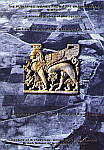
Format: Paperback
Pages: 181
ISBN: 9780903472166
Pub Date: 18 Jul 2004
Illustrations: many illus, accompanying CD
Description:
Nimrud is an exceptionally generous site, and has richly rewarded those that work there. It was first famous for the Assyrian bas reliefs found by the 19th century archaeologist, Austen Henry Layard, but is also famous for the thousands of ivories found during the 19th and 20th centuries. The ivories were mostly imported from the Levantine kingdoms to the west, either as tribute or booty, although there were some in the distinctive local Assyrian style.
They were used to embellish furniture, as well as small objects, and are carved in a great variety of styles, but interestingly with a relatively limited repertoire of subjects. Their time of manufacture probably dates to the early centuries of the first millennium BCE, although their archaeological context is dated by the fall of the Assyrian empire in 614-612 BCE. This publication is a supplement to the volumes already published, which catalogue the ivories, and instead presents scans from the original photographs, where possible, of the ivories from Fort Shalmaneser, which have been published in the first five volumes, so that scholars can select and rearrange ivories as appropriate. In this way, the next generation of work involving deeper stylistic and analytic studies by a range of scholars asking different questions may be undertaken.
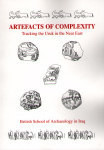
Format: Paperback
Pages: 264
ISBN: 9780856687365
Pub Date: 01 Mar 2002
Series: Iraq Archaeological Reports
Illustrations: many b/w illus and figs
Description:
The late 4th millennium in South Mesopotamia is universally known as the Uruk Period because it is at Uruk that the German excavations have exposed the most remarkable manifestations of this complex society. Although the Uruk period in Iraq itself remains little understood, in recent decades artefacts and entire settlements have been discovered in places as far apart as the Mahi Dasht in Iran and the Euphrates in South-eastern Turkey. This volume attempts to track the Uruk phenomenon in the Near East, bringing together research on some of the most significant individual sites within the Levant and Egypt, placing emphasis on the artefactual evidence.
The eleven papers were originally presented at a conference in Manchester in 1998. The contributors are Hans Nissen, Renate Gut, Mitchell Rothman, Virginia Badler, Joan Oates, Marcella Frangipane, Gil Stein, Fiona Stephen, Edgar Peltenburg, Govert van Driel, Graham Philip and Toby Wilkinson.

Format: Hardback
ISBN: 9780903472203
Pub Date: 01 Dec 2001
Illustrations: 327 pages, plus 64 b/w plates
Description:
In 1952 in one wing of the North-West Palace at Nimrud, ancient Kalhu, Max Mallowan excavated an archive room containing royal correspondence from the reigns of Tiglath-pileser III and Sargon II of Assyria. Subjects include Assyrian military activity in Babylonia and on the northern frontier, royal building projects, events on the Phoenician seaboard, and relations with King Midas of Phrygia. Some texts were published in Iraq between 1955 and 1974; the majority have remained unpublished until now.
Two hundred and forty-three texts are published here; most are in New Assyrian script and the remainder in New Babylonian. Chapters divide the tablets into the geographical areas they are concerned with. The texts are presented with transliterations, translation and notes. Plates at the end of the book give facsimiles of the tablets.















